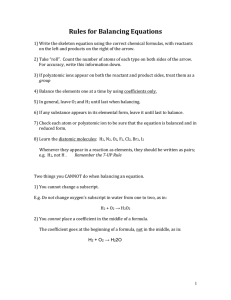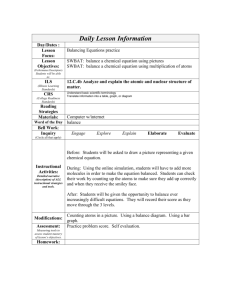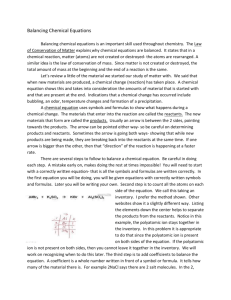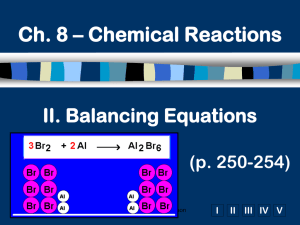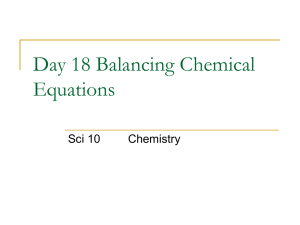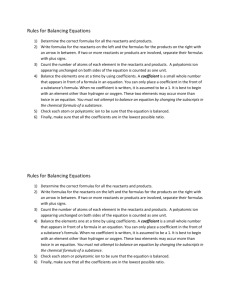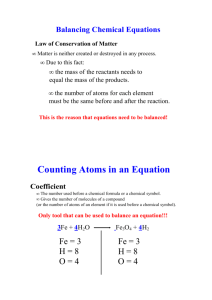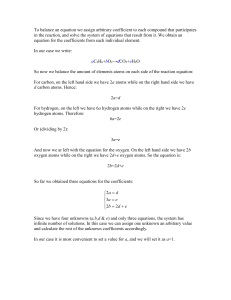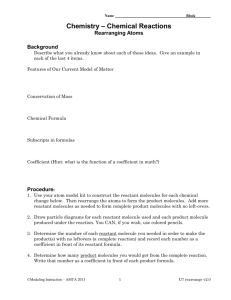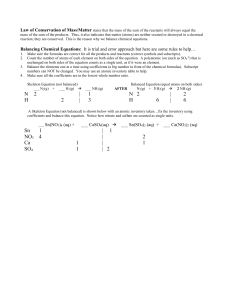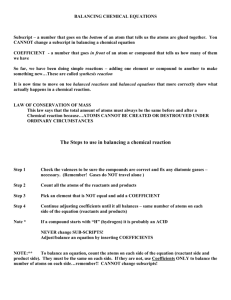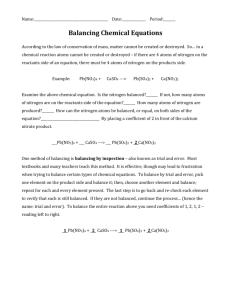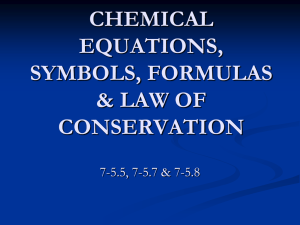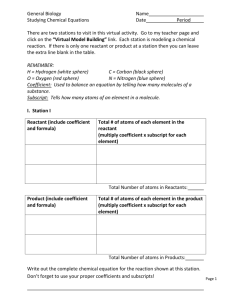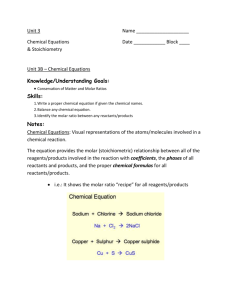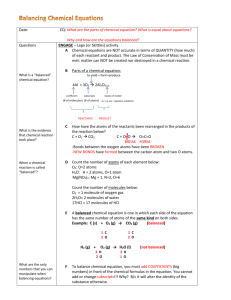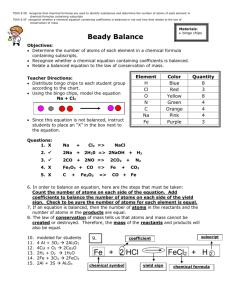Helpful Hints by Zarley: Balance Equations using polyatomic ion
advertisement
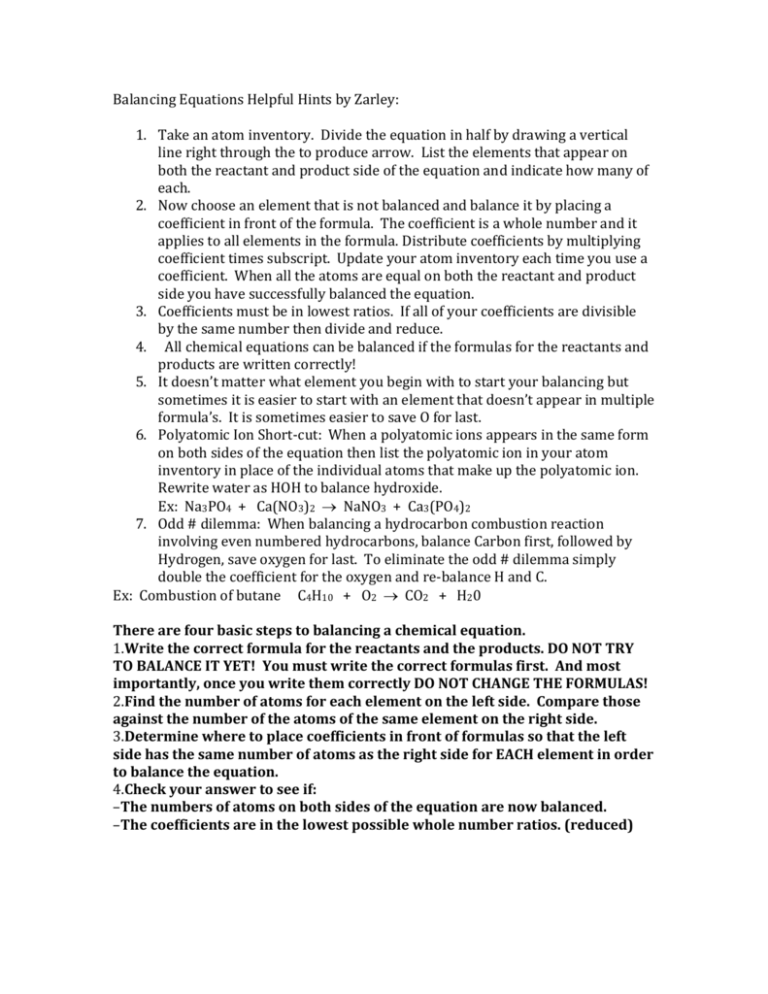
Balancing Equations Helpful Hints by Zarley: 1. Take an atom inventory. Divide the equation in half by drawing a vertical line right through the to produce arrow. List the elements that appear on both the reactant and product side of the equation and indicate how many of each. 2. Now choose an element that is not balanced and balance it by placing a coefficient in front of the formula. The coefficient is a whole number and it applies to all elements in the formula. Distribute coefficients by multiplying coefficient times subscript. Update your atom inventory each time you use a coefficient. When all the atoms are equal on both the reactant and product side you have successfully balanced the equation. 3. Coefficients must be in lowest ratios. If all of your coefficients are divisible by the same number then divide and reduce. 4. All chemical equations can be balanced if the formulas for the reactants and products are written correctly! 5. It doesn’t matter what element you begin with to start your balancing but sometimes it is easier to start with an element that doesn’t appear in multiple formula’s. It is sometimes easier to save O for last. 6. Polyatomic Ion Short-cut: When a polyatomic ions appears in the same form on both sides of the equation then list the polyatomic ion in your atom inventory in place of the individual atoms that make up the polyatomic ion. Rewrite water as HOH to balance hydroxide. Ex: Na3PO4 + Ca(NO3)2 NaNO3 + Ca3(PO4)2 7. Odd # dilemma: When balancing a hydrocarbon combustion reaction involving even numbered hydrocarbons, balance Carbon first, followed by Hydrogen, save oxygen for last. To eliminate the odd # dilemma simply double the coefficient for the oxygen and re-balance H and C. Ex: Combustion of butane C4H10 + O2 CO2 + H20 There are four basic steps to balancing a chemical equation. 1.Write the correct formula for the reactants and the products. DO NOT TRY TO BALANCE IT YET! You must write the correct formulas first. And most importantly, once you write them correctly DO NOT CHANGE THE FORMULAS! 2.Find the number of atoms for each element on the left side. Compare those against the number of the atoms of the same element on the right side. 3.Determine where to place coefficients in front of formulas so that the left side has the same number of atoms as the right side for EACH element in order to balance the equation. 4.Check your answer to see if: –The numbers of atoms on both sides of the equation are now balanced. –The coefficients are in the lowest possible whole number ratios. (reduced)
